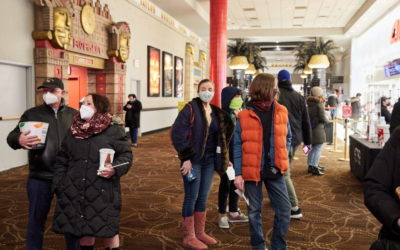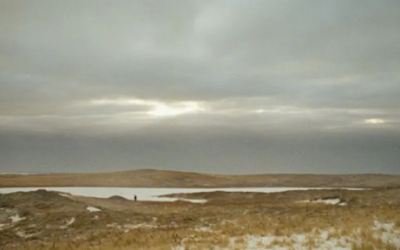Source: NBC News
When a film is completed and released to the public, that’s usually the end of its production journey. After all, there’s an assumption that a finished film has been made exactly how its creators had intended it to appear. However, there are occasions where films have had to be taken back to the editing room and re-adjusted for whatever reason. This is hardly a new issue; as far back as the Golden Age of Hollywood, films have been re-edited to appease censors and be permitted for exhibition in theatrical venues that may not be so accepting of certain content. However, while such revisions may have an impact on how a film plays out or sounds, what’s seen within a single image may not be so easy to change, or at least that was the case during the early days of Hollywood. With the advancement of digital technology beginning in the early 1980s, producers and filmmakers have become more capable of making the visuals as initially seen in the original prints of a given film appear in a way in which they had never been seen before, though not necessarily in a way that most would find appealing.
Among the first of these new advancements was the colorization process, with which films that were originally shot in black and white could now be seen in full color. For those who have no interest in these older, minimally colored cinematic works, this process would allow such films to be more palatable to a world that has grown accustomed to color cinematography. On the other hand, many film purists found the idea of adding color to films that may have been shot in black and white for a very specific reason to be sacriligeous. Among the most notable critics to have spoke out against colorization was “Citizen Kane” auteur Orson Welles; upon hearing that media mogul Ted Turner was considering a colorized version of his 1941 classic, Welles allegedly had this response: “Don’t let Ted Turner deface my movie with his crayons.”
As digital effects technology advanced further, some filmmakers took it upon themselves to add or change certain elements from how they originally appeared. Perhaps the most notable example of this was George Lucas and his Special Edition versions of his “Star Wars” trilogy, which he began releasing in 1997 with new digital alterations and additions that allowed him to make his films closer to how he would’ve originally made them back in the late 1970s and early 1980s had the technology been more up to date. Lucas and other filmmakers like him were indeed able to revise their films to better suit their original visions (among several other reasons why they might want to alter their film), but to paraphrase Dr. Ian Malcolm (as played by Jeff Goldblum) from “Jurassic Park”, just because one can does not necessarily mean one should. Ironically, these are the exact sentiments felt by that film’s very director, as evidenced by a recent discussion he had in which he expressed regret over altering one of his most iconic works.
While taking part in a masterclass as the Time 100 Summit, director Steven Spielberg, best known for “Jaws”, the :Indian Jones” series, and countless other cinematic classics, discussed his 1982 “E.T. the Extra-Terrestrial” and a version of the film made for its 20th anniversary celebration in 2002. In this version, a scene that had previously shown a pair of government officials holding guns in the original cut now featured the same men’s weapons being switched out for walkie-talkies. At the time, such a small but noticeable change was met with ridicule from several different voices within the entertainment industry (the Comedy Cental animated series “South Park” even spent much of the episode “Free Hat” mocking the alteration), and over twenty years after that initial incident (and all future re-issues of the film returning to the use of the original cut), Spielberg seems to agree that editing out the guns was a mistake. “I never should have done that,” Spielberg admitted. “‘E.T.’ is a product of its era. No film should be revised based on the lenses we now are, either voluntarily, or being forced to peer through.”
As he continued to speak, Spielberg revealed more about what originally inspired him to make the change and how he came to realize the error of doing so. “‘E.T.’ was a film that I was sensitive to the fact that the federal agents were approaching kids with firearms exposed and I thought I would change the guns into walkie talkies, “Spielberg explained. “Years went by and I changed my own views… I should have never messed with the archives of my own work, and I don’t recommend anyone do that. All our movies are a kind of a signpost of where we were when we made them, what the world was like and what the world was receiving when we got those stories out there. So I really regret having that out there.”
Comparing his re-editing of “E.T.” to the recent announcement that the works of author Roald Dahl would be revised to remove language that would deem insensitive nowadays, Spielberg further stressed the need to leave works of the past as they were originally written. “Nobody should ever attempt to take the chocolate out of Willy Wonka! Ever!” Spielberg joked before returning to speak with a more serious tone. “For me, it is sacrosanct. It’s our history, it’s our cultural heritage. I do not believe in censorship in that way.”
If Spielberg’s words are any indication, looking back at the past while simultaneously planning ahead for the future is hardly an easy task, and the most recent additions to his filmography are further proof of this. In the past two years, Spielberg has directed “West Side Story”, the second cinematic adaptation of the iconic stage musical, and “The Fabelmans”, a semi-autobiography loosely based on his own life and experiences. At the moment, he is currently making plans for a remake of the 1968 Steven McQueen action-thriller while also preparing for the debut of “Indiana Jones and the Diamond of Destiny”, which he is producing but not directing (instead choosing to hand control over to “Logan” director James Mangold). However, when it comes to the films he has already finished, he seems more than eager to leave them as they originally appeared, having learned a lesson that might be of great use to anyone else working in the film industry.




